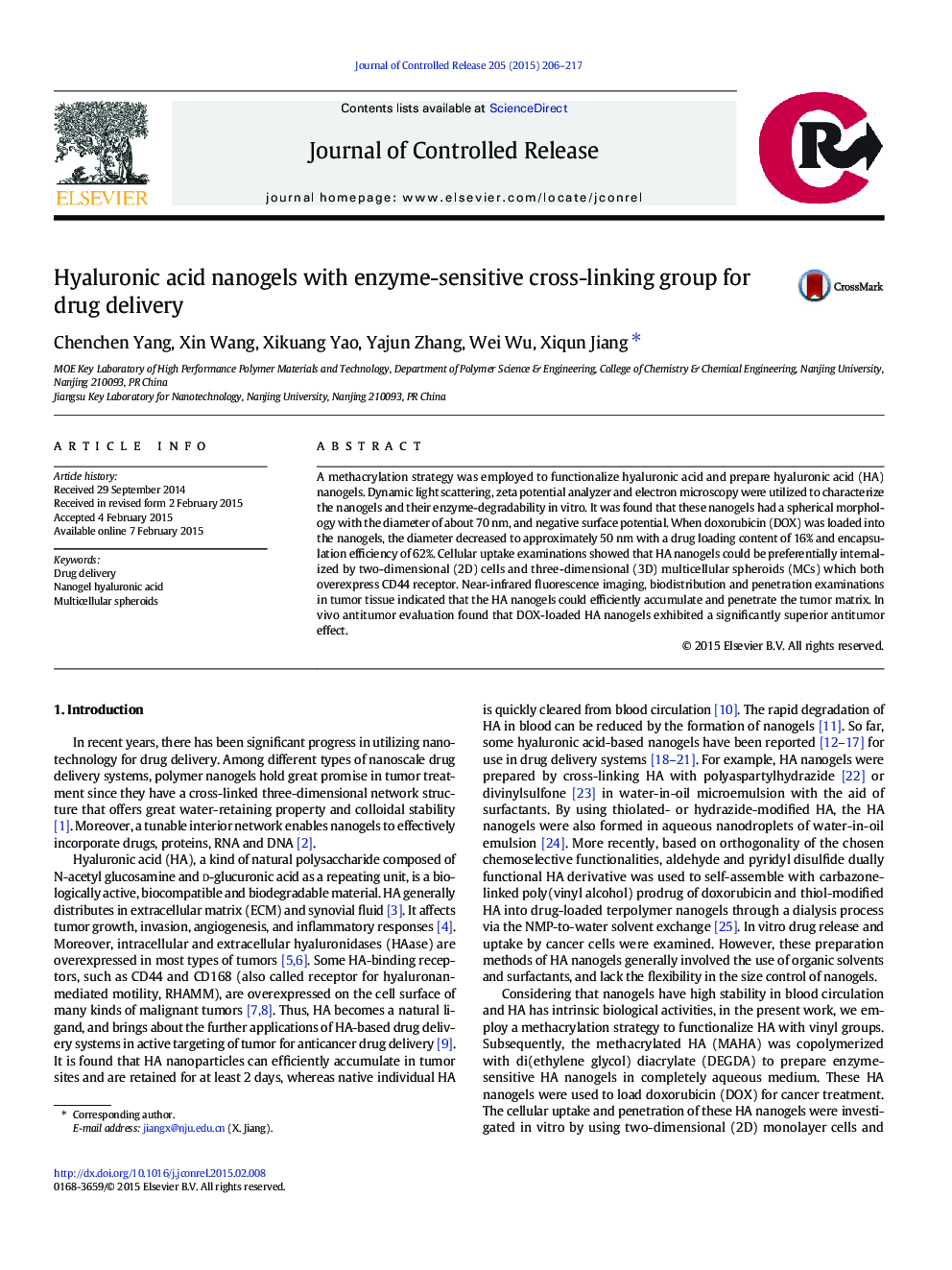| Article ID | Journal | Published Year | Pages | File Type |
|---|---|---|---|---|
| 1423773 | Journal of Controlled Release | 2015 | 12 Pages |
A methacrylation strategy was employed to functionalize hyaluronic acid and prepare hyaluronic acid (HA) nanogels. Dynamic light scattering, zeta potential analyzer and electron microscopy were utilized to characterize the nanogels and their enzyme-degradability in vitro. It was found that these nanogels had a spherical morphology with the diameter of about 70 nm, and negative surface potential. When doxorubicin (DOX) was loaded into the nanogels, the diameter decreased to approximately 50 nm with a drug loading content of 16% and encapsulation efficiency of 62%. Cellular uptake examinations showed that HA nanogels could be preferentially internalized by two-dimensional (2D) cells and three-dimensional (3D) multicellular spheroids (MCs) which both overexpress CD44 receptor. Near-infrared fluorescence imaging, biodistribution and penetration examinations in tumor tissue indicated that the HA nanogels could efficiently accumulate and penetrate the tumor matrix. In vivo antitumor evaluation found that DOX-loaded HA nanogels exhibited a significantly superior antitumor effect.
Graphical abstractDoxorubicin-loaded hyaluronic acid nanogels were synthesized by a methacrylated strategy. In vitro cellular uptake shows that these nanogels were preferentially internalized by the CD44 or CD168-overexpressed cancer cells. In vivo antitumor examination indicates that these nanogels suppress tumor growth distinctly.Figure optionsDownload full-size imageDownload high-quality image (75 K)Download as PowerPoint slide
